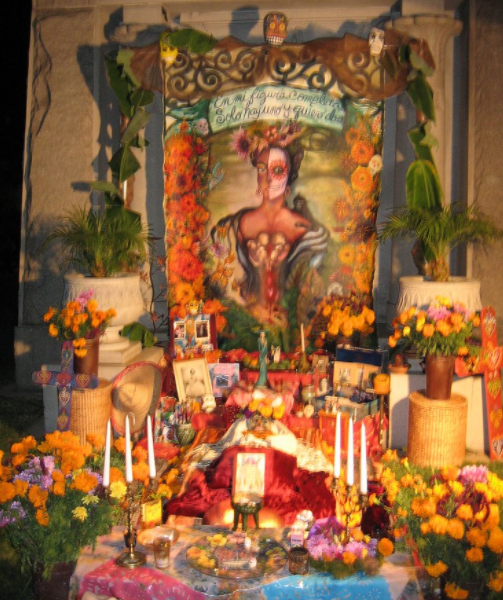History of Dia de los Muertos

"Dia de Los Muertos" by carlossg is licensed under CC BY-NC-SA 2.0
Pictured above is an example of an offrenda. These are setups that honor the deceased.
History of Dia de los muertos
By: Amanda Bream
Bark! Voice of the Bulldogs
Editor-in-chief
Families celebrate Dia de los Muertos every year from Nov. 1st to Nov. 2nd in honor of lost relatives.
Dia de los Muertos has been celebrated for many many years. The direct translation of Dia de los Muertos is Day of the Dead.
The celebration originates from Mexico but has a lot of Aztec influence. There are tracings of the celebration dating back three thousand years.
According to History.com, ¨the Aztecs and other Nahua people living in what is now central Mexico held a cyclical view of the universe, and saw death as an integral, ever-present part of life.”
Dia de los Muertos is widely celebrated by Hispanic countries. This event celebrates the lives of deceased family and friends instead of mourning them. There is a wide belief that if people were to mourn then the dead would feel deeply insulted.
Families who celebrate the lives of the deceased tend to make an ofrenda and decorate it in the deceased’s favorite things or common things seen on the day of the dead.
Such things would be Marigolds, sugar skulls, the bread of the dead, and perforated paper. Marigolds are said to lead the spirits to their intended altars. Small sugar skulls are supposed to represent the children who have passed while the larger skulls represent the adults who have passed. The bread symbolizes an offering to those who have passed. The paper is supposed to represent the wind.
Day of the dead is important in many countries but is most widely known in Mexico and it is also one of the largest celebrations in Hispanic culture.

Amanda is currently an Editor-in-Chief for Bark! Voice of the Bulldogs. She is a senior in high school planning to attend the University of Mobile in the...










